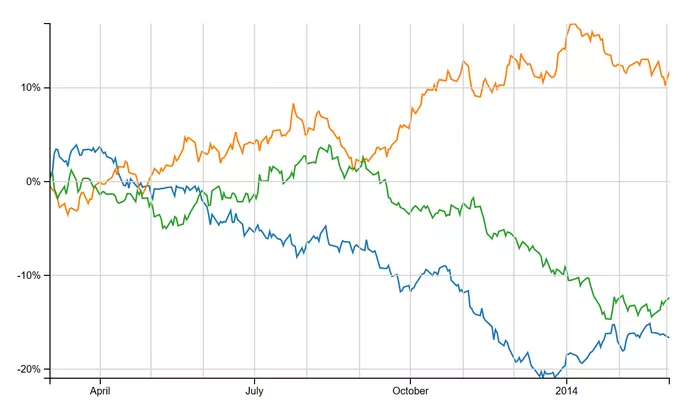In the world of stock trading, timing is crucial. One of the most talked-about periods during the trading day is the “Power Hour,” a time when stock market activity typically intensifies. Traders, investors, and market enthusiasts all eagerly watch for signs of price movements, volatility, and volume during this hour. Understanding when and why Power Hour occurs can give you a strategic edge in your trading.
What is Power Hour?
Power Hour refers to the final hour of the trading day, typically between 3:00 PM and 4:00 PM EST, in the U.S. stock market. It is a time known for increased trading volume and heightened market volatility, driven by various factors such as institutional trading, retail investor activity, and corporate news releases. Traders who focus on this period believe that the last hour of the market session offers unique opportunities for gains, especially as prices can swing dramatically due to last-minute adjustments.
Understanding Power Hour is not just about when it happens, but why it’s an essential period for both professional and retail traders. The combination of market events and behavioral psychology during Power Hour creates an environment where stock prices are more likely to make big moves.
Why Does Power Hour Matter?
There are several reasons why Power Hour is significant for traders:
1. Increased Liquidity
As the trading day nears its close, many institutional investors and mutual funds make their final trades. These large transactions increase the overall market liquidity, which can lead to more significant price movements. If the market has been quiet throughout the day, Power Hour can often see more activity, as traders position themselves for the next day or try to lock in gains.
2. Closing Orders
Many institutional investors and hedge funds place closing orders during Power Hour to either adjust their positions or lock in profits. This can lead to an uptick in trading volume and may cause price swings as large blocks of stocks are bought or sold.
3. Earnings Reports and News Releases
Power Hour is often the time when companies release their earnings reports or important announcements. These reports can cause immediate shifts in stock prices, particularly for companies with large market capitalizations. Traders pay close attention to any late-breaking news, and those who react quickly can sometimes capitalize on the volatility that follows.
4. Psychological Factors
Traders’ emotions can also play a large role in Power Hour. As the market closes, there is a sense of urgency to make final trades. The pressure to make decisions quickly can cause rapid shifts in stock prices, particularly when traders believe that the market is in a particular trend. Whether due to fear, greed, or the desire to capitalize on the closing moves of the market, these emotional reactions contribute to volatility.
5. Market Trends and Reversals
In the last hour of the day, traders often try to predict the direction of the market for the next day. Power Hour can sometimes be a period when trends that have been building throughout the day either reverse or gain momentum. Traders who are able to read these signals can position themselves for potential profits.
How to Trade During Power Hour
Trading during Power Hour requires skill, experience, and a deep understanding of market psychology. Here are some strategies that traders use to take advantage of this time period:
1. Monitor Market Trends
One of the most important things to do during Power Hour is to monitor existing trends. If stocks are trending upwards throughout the day, they might continue that movement into the final hour of trading. Conversely, if stocks are trending downwards, Power Hour could see a continuation or a reversal of that trend.
Traders should also look for signs of exhaustion or consolidation in the market. If a stock has been climbing steadily for most of the day, it may start to consolidate in Power Hour before making its next move.
2. Follow Institutional Activity
As mentioned earlier, Power Hour is a time when institutional investors make their final trades. These investors often set the tone for the market in the last hour. If you can identify what these large players are doing, you can often follow their lead or take advantage of any sharp movements they cause.
Tools like Level II market data, which shows order book depth, can be helpful for observing institutional orders. These types of trades can give you a sense of where the market might be headed as the close approaches.
3. Utilize Technical Analysis
Technical analysis is an essential part of trading during Power Hour. Look for price patterns, moving averages, support and resistance levels, and volume indicators. These technical tools can help you predict price movements and identify potential entry or exit points during the final hour of the trading day.
Power Hour often brings about increased volatility, so relying on technical indicators that help you understand price movements is especially crucial. For example, RSI (Relative Strength Index) or MACD (Moving Average Convergence Divergence) can help you assess whether a stock is overbought or oversold.
4. Watch for Earnings Reports
Earnings reports are typically released after the market closes or during the final hours of trading. As a trader, it’s crucial to stay updated on when key companies are reporting and how analysts expect those reports to impact the stock price.
Stocks can sometimes make significant moves after earnings announcements, and Power Hour can be an excellent time to trade these reactions. However, these trades carry more risk since you’re dealing with fresh news that can quickly change the market’s direction.
5. Focus on Volume and Volatility
Volume and volatility tend to increase during Power Hour, which can present opportunities for traders who thrive on volatility. Look for stocks that have higher-than-average volume or sudden jumps in price. These stocks often present an opportunity to capitalize on the price swings during the last hour of trading.
Some traders focus on stocks that have already shown signs of increased volatility throughout the day and use Power Hour to potentially catch the final moves of the session.
6. Be Prepared for the Close
As the market nears its close, price action tends to accelerate. Many traders make their last-minute trades, either adjusting their positions for the next day or trying to lock in profits. Keep an eye on the final few minutes before the close and be prepared for potential volatility during this period.
If you’re trading during Power Hour, have a strategy in place for how you want to position yourself during the final moments of the trading session.
The Risks of Trading During Power Hour
While Power Hour presents opportunities, it also carries risks. The heightened volatility and rapid price movements can lead to sudden losses if you’re not careful. Here are some risks to be aware of:
1. Increased Risk of Sudden Price Swings
The volatility during Power Hour can cause stocks to move unpredictably. Large institutional trades and news announcements can trigger rapid price changes, which may not always align with your trading strategy.
2. Emotional Decision-Making
The urgency to make final trades before the market closes can lead to impulsive decisions. Emotional trading can cloud judgment, leading to poor decision-making and potentially significant losses.
3. Limited Time to React
Power Hour offers limited time to make adjustments, as the market only remains open for one hour. Quick decisions and fast-moving stocks mean you may not always have time to analyze each trade thoroughly before executing it.
4. Reduced Liquidity in Certain Stocks
While liquidity tends to rise during Power Hour, not all stocks see the same level of activity. Small-cap stocks or less-popular securities might see significant fluctuations without enough liquidity to execute large trades at favorable prices.
Conclusion
Power Hour is a critical period in the stock market, offering traders both opportunities and risks. The increased volatility, volume, and market-moving events provide a unique environment for short-term traders who can handle fast-paced decision-making. By understanding the dynamics of Power Hour and implementing effective trading strategies, traders can improve their chances of success during this high-intensity period.
However, it’s important to approach Power Hour with caution. Increased risks, including emotional trading and unexpected price swings, make this time a double-edged sword for traders. Successful trading during Power Hour requires experience, preparation, and a keen understanding of market trends.
Related topics:































